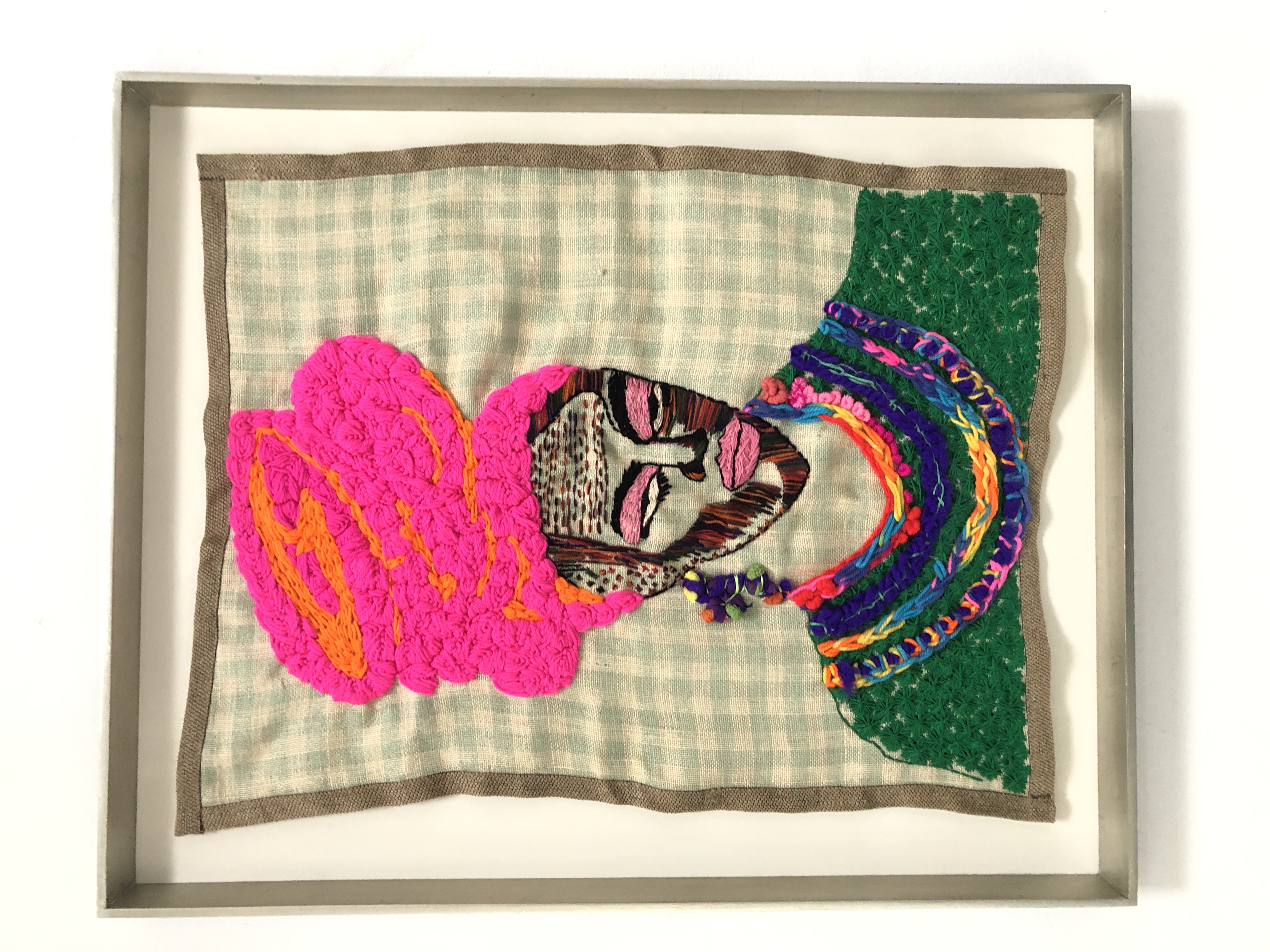At first glance one is drawn to the different facial expressions, the elaborate headdresses and the colourful collars adorned by the women portrayed in Lerato Motau’s Ten Thousand Women, her second solo exhibition currently on at AITY Gallery in Franschhoek. In this form of Black figuration, the artist employs embroidery as a form of painting. Motau uses this layered form of storytelling to celebrate and memorialise the community of women around her, who have been with her through thick and thin.
In this conversation with writer Barnabas Ticha Muvhuti, the artist discusses different aspects of this unique last edition of works.
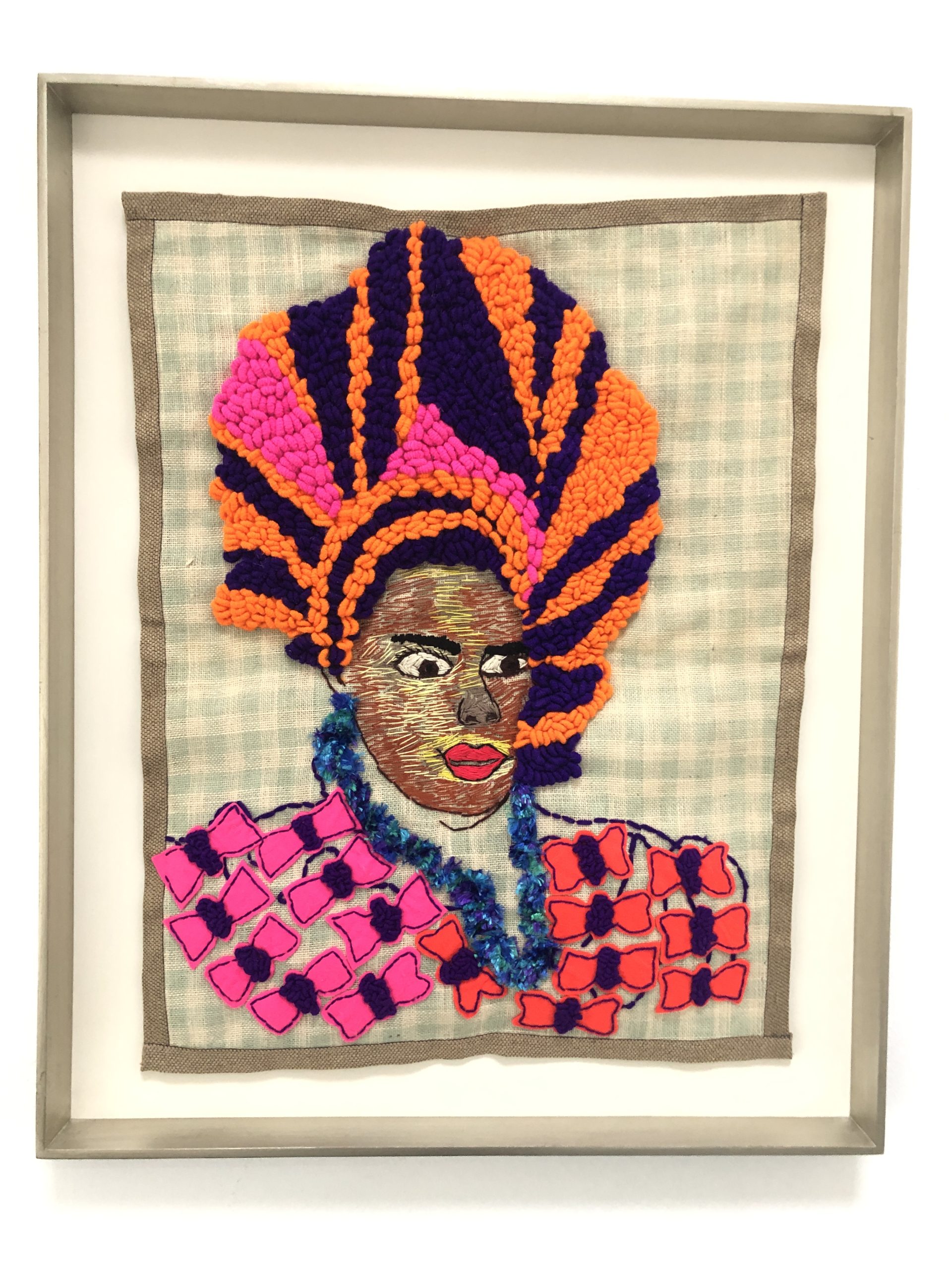
Lerato Motau, Penny; 2022
Barnabas Ticha Muvhuti: Congratulations on marking Women’s Month with your second solo exhibition. Would you please unpack it for us?
Lerato Motau: My show is about ten thousand women that stood with me. I could not count all of them and I could not name them all on the artworks that I have made for the show. That is why I have chosen the title Ten Thousand Women for those that stood with me, from my mom to my two daughters. The works represent every one of them, their characters, and the way they helped me through my ups and downs. I fell sick last year and some of these women offered spiritual, emotional, and financial support.
Barnabas Ticha Muvhuti: You also acknowledge the community of women who have donated materials which went into this project. Do you consider this some form of collaboration with them?
Lerato Motau: I started embroidery in 2005 when I was doing a learnership at the Craft Council in Johannesburg. I met different women from different countries and each time we met, some of them would donate something in terms of my art. I have kept these gifts for such a long time. I remember Frida donated wool. The late Sue gave me her old, embroidered collars because I wanted to do a series of collars in that year. Other women donated fabrics and scraps of fabric. I thought with art, the more you collaborate or engage in some partnership, the more the work becomes stronger.
The project has a sense of belonging somewhere with people. Even if they have left me or passed away, I still have the piece that they gave me and I wanted these works to also reflect that there are those who are no longer with me, but their spirits live in the work. That includes my sister who passed away last year, I wanted each and everyone to be part of it. I had my first solo exhibition in Johannesburg in 2010. Even with the sixteen artworks that I give away to women that came to the opening of this show at AITY Gallery, I wanted them to be part of this historical moment that is for women and it is Women’s Month, we need to celebrate each other.
Barnabas Ticha Muvhuti: I am sorry to hear about your sister’s passing.
Lerato Motau: At least now I am coping well. The past year was not easy. I even had setbacks of anxiety. On some days I couldn’t cope, but preparing for this exhibition has helped me move forward with life and deal with my anxieties and emotional struggles.
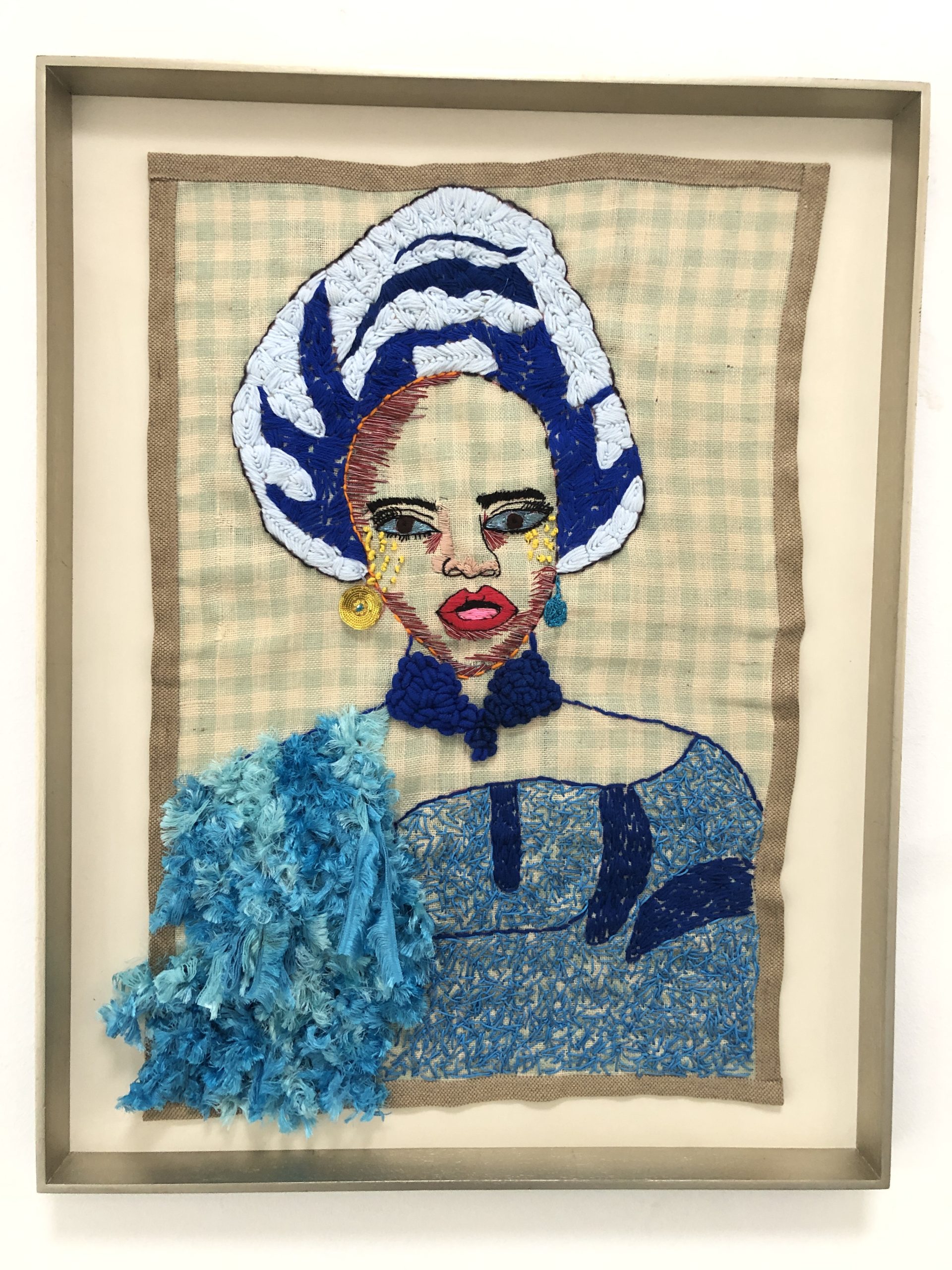
Lerato Motau, Kholo; 2022
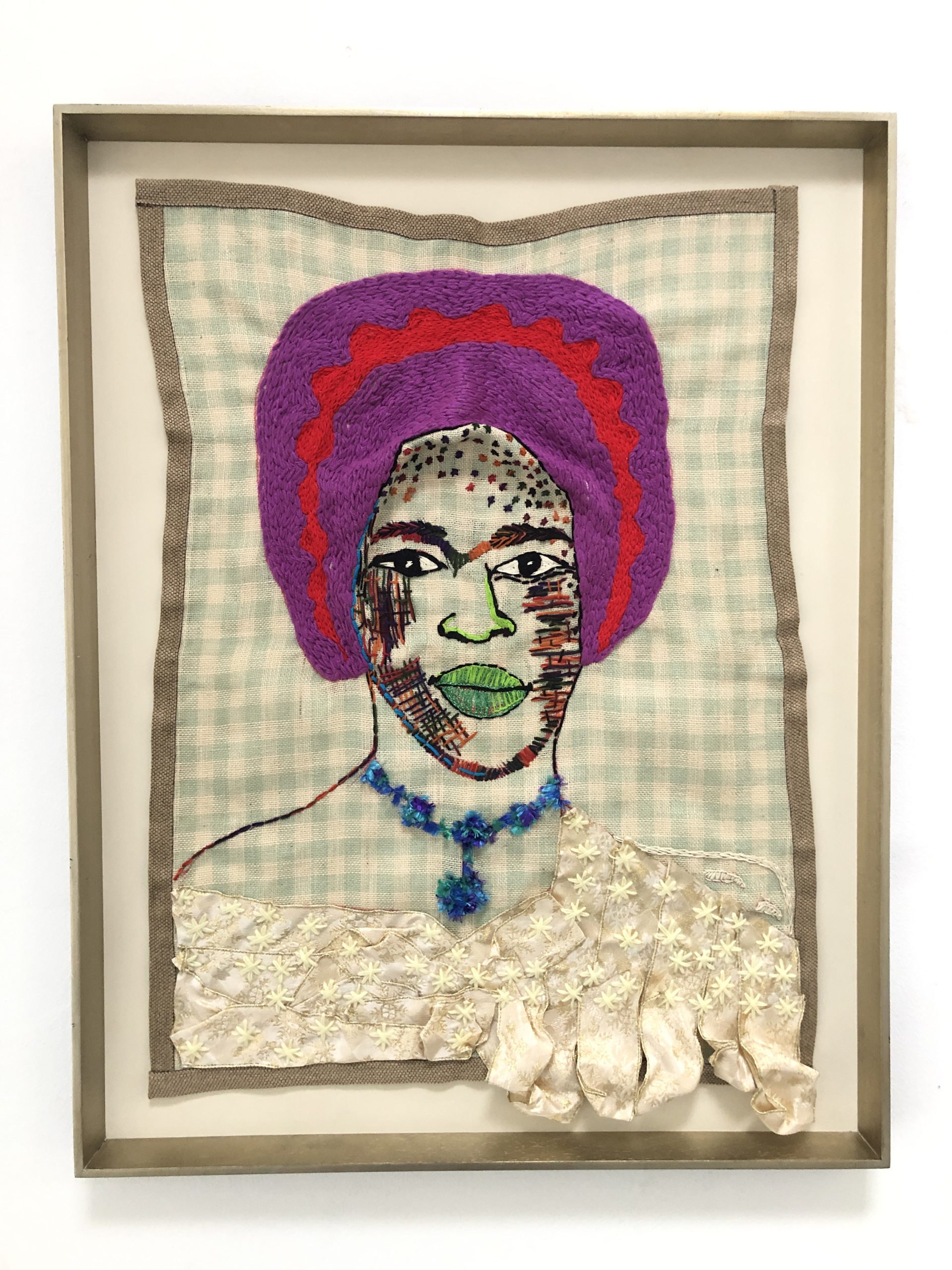
Lerato Motau, Sandra; 2022
Barnabas Ticha Muvhuti: I am drawn to the opulent headdresses.
Lerato Motau: Yes, I have been doing women wearing headdresses for such a long time. I think I started in 2010 but only started using embroidery as a medium in 2012. I love our patterns on the fabrics of different cultures, like on the doeks. I feel that this is not just a representation of being umakhoti or a cultural thing, but it can also be stylish, and you stay and look beautiful as a woman with your hair or doek.
For each one, I wanted to use the journey of a stitch, whether it is the bow knot or cross stitch. When I used to teach my students we used to call the Y-stitch ‘chicken feet’ because when you put one stitch in-between it resembles chicken feet, they would always say, “Ma’am I would like to do a chicken stitch, haha!”
Barnabas Ticha Muvhuti: What attracts you to bright colours?
Lerato Motau: I am inspired by fashion, and I always look at fashion designers, documentaries, and magazines. I even cut out different patterns and colour combinations. Fashion is one thing I wanted to give these women. If you look at them, they give you hope, they give you joy because the colours are joyful and vibrant and where I grew up, the Tsonga used to wear beautiful bright colours.
Barnabas Ticha Muvhuti: The unique facial expressions also stand out.
Lerato Motau: The different facial expressions have to do with how I manipulate sewing in terms of painting. Remember these materials are all different and they come from different people. Some donated fabrics, others lang rolls. I wanted to include each of the materials I have been blessed with in a way that captures the momentum when I think about the person who gave it to me. In some instances, the eyes tell a story in a way when you look at them and then the relationship between different yarns and cotton which are pushing and pulling each other but still bring out the look and form of an object or form a person’s face.
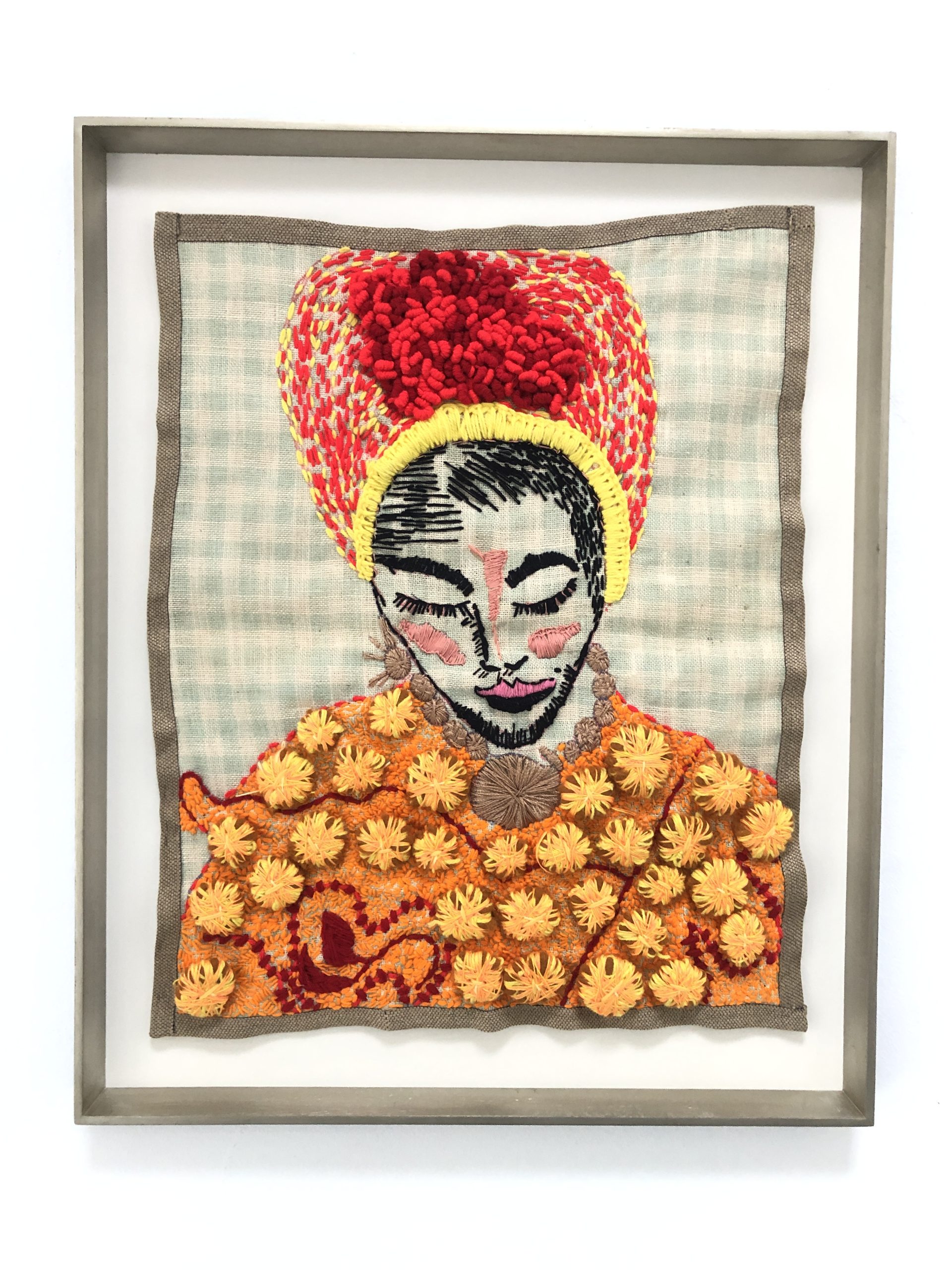
Lerato Motau, Georgia; 2022
Barnabas Ticha Muvhuti: I see characteristic elements of painting in the embroidery.
Lerato Motau: I remember I enjoyed needlework as a medium in primary school because I had dyslexia, and I did not know what was going on with me. I could not read and write. I was the happiest child in class regarding needlework, creating work that I loved. This is one medium I can say sustained me throughout my life. Even when I studied Fine Arts, at the back of my mind I knew that I still must use embroidery as a medium and in 2005, I enrolled on a course in which I studied basic embroidery. That was the time the childhood thoughts and memories at the back of my mind came back and fulfilled my space. I am left-handed and it is difficult to teach a person who is left-handed to embroider, knit or crochet. Yet, I remember our teacher would always ask me to demonstrate to the class. I felt proud that there was something that I knew how to do. I also wanted to find a communication tool that does not have text but is visual. That is why if you look at the faces, some of them are so detailed that they are more of bespoke pieces that one enjoys looking at. I wanted that to also come across. Because of my dyslexia, sometimes I do not like writing much when I share art on social media but the art has to speak for itself.
When I was in school, I liked expressionist artists. Even though most of them used oil paint, I liked how they used their brushes to manipulate the texture of the paint. Some of it Fauvism – looking at the tree, but painting it not brown, but orange instead. So, with all of this, I wanted to capture past and historical painters in a more contemporary way. Embroiders from the olden days do not put a knot at the end of yarn or the wool. I put knots on mine. Even if you look at the back, there are lots of knots. Each wool or yarn that I use or cotton has a knot at the back of it.
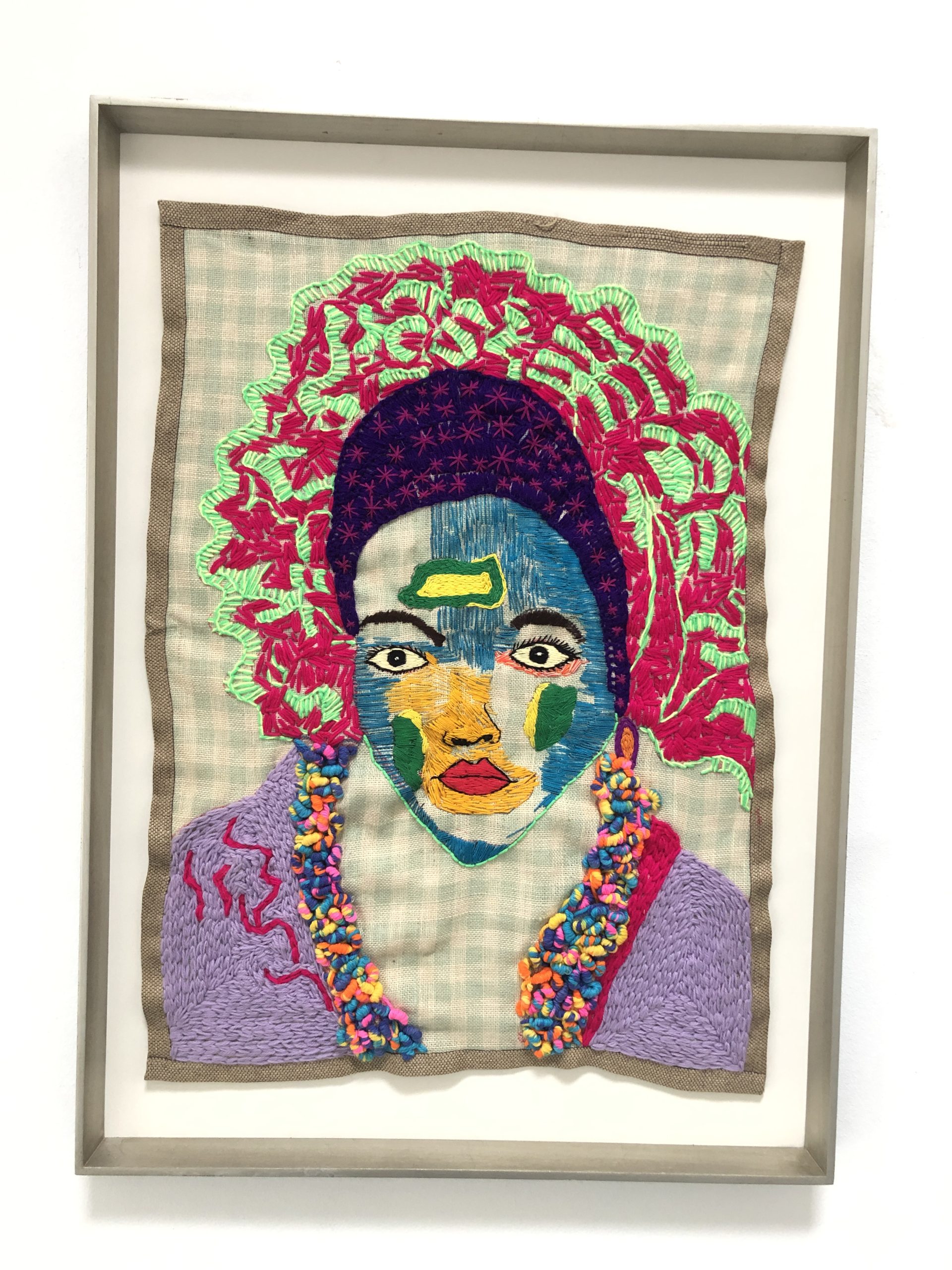
Lerato Motau, Lerato; 2022
Barnabas Ticha Muvhuti: I understand these knots are an important element in this work. Please elaborate.
Lerato Motau: Those knots ensure that my work does not frail! Even if one pulls or hooks a thread by touching or poking it with something, it won’t come out just randomly. Knots are a ‘no no’ in terms of traditional embroidery, but for me, they are a ‘yes yes!’ Even when I teach, I tell people that first thing is to put a knot at the end of the thread, before they even start working with their wool.
Barnabas Ticha Muvhuti: You indicated that this series is coming to an end. So, what is coming up next?
Lerato Motau: Haha, the one thing that I will not be able to get is the check hessian, and also these fabrics which were donated to me. With some of them, it was just a cob of yarn. Or one colour that even if I try to go find it I would not. The supply for some of the materials has run out. They have a few colours that I do not normally use. So, I will not have such colourful work. Even if they are colourful, the texture will not be the same. Due to these challenges, I will make work but not have this type of artistic textural work. Even in Cape Town where I used to buy it, they don’t import it anymore. It is a bit tricky now to get some of the cotton and the yarns
About the future, all I can say is I would like to collaborate with other artists and a designer if I find one.
Ten Thousand Women, Lerato Motau’s second exhibition, is on at AITY Gallery, Heritage Square. 9 Huguenot Street, Franschhoek – from 21 August until 16 September 2022.
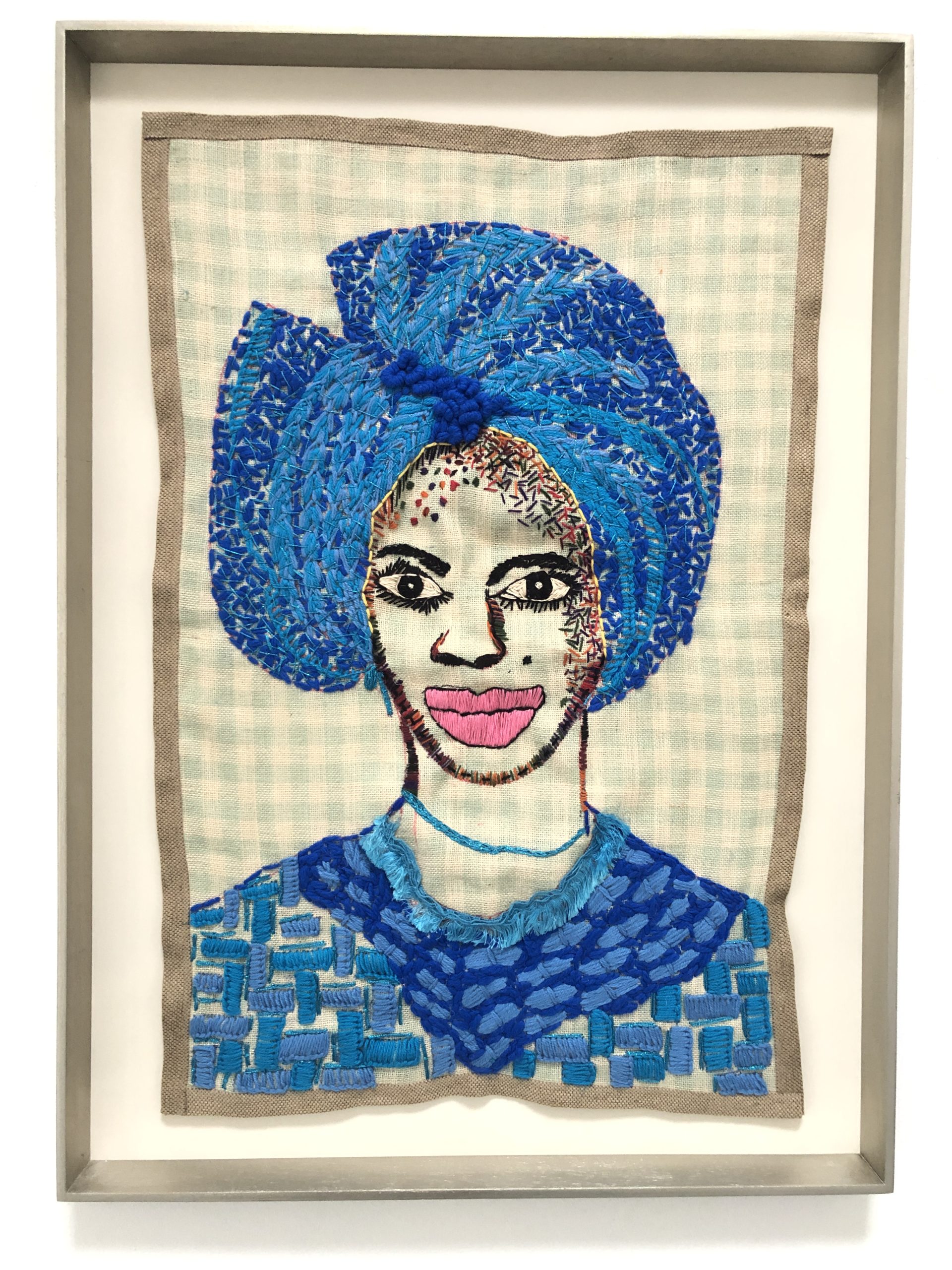
Lerato Motau, Rose; 2022


